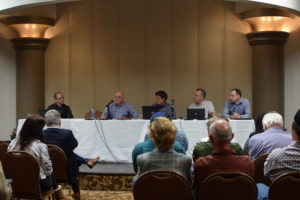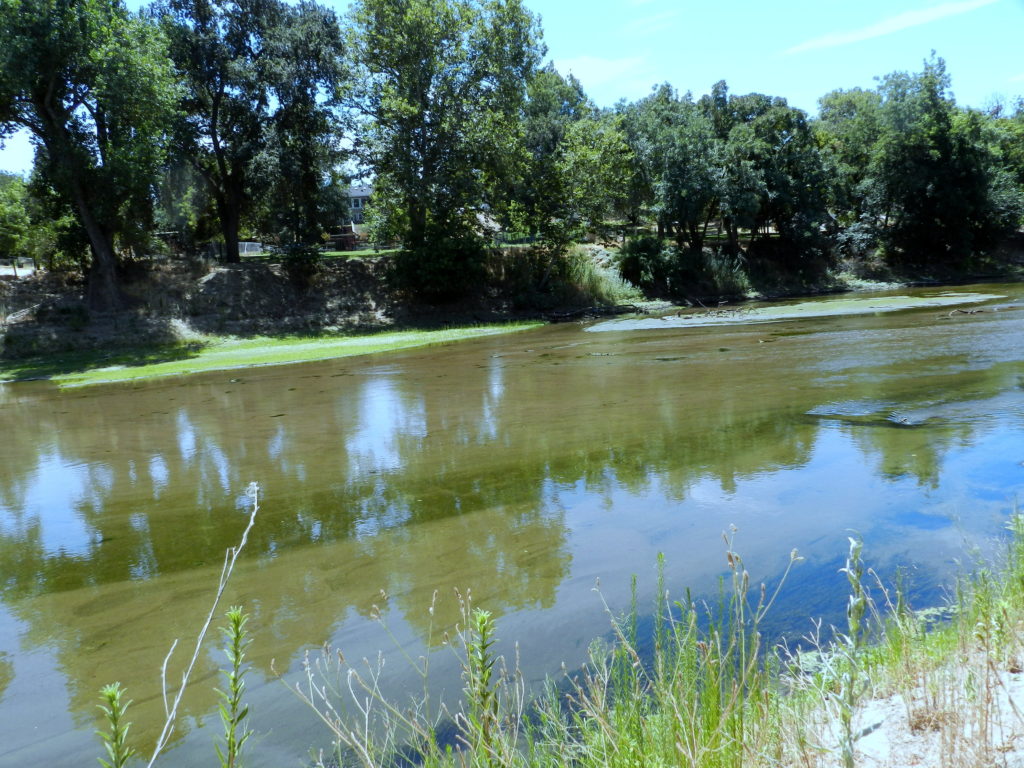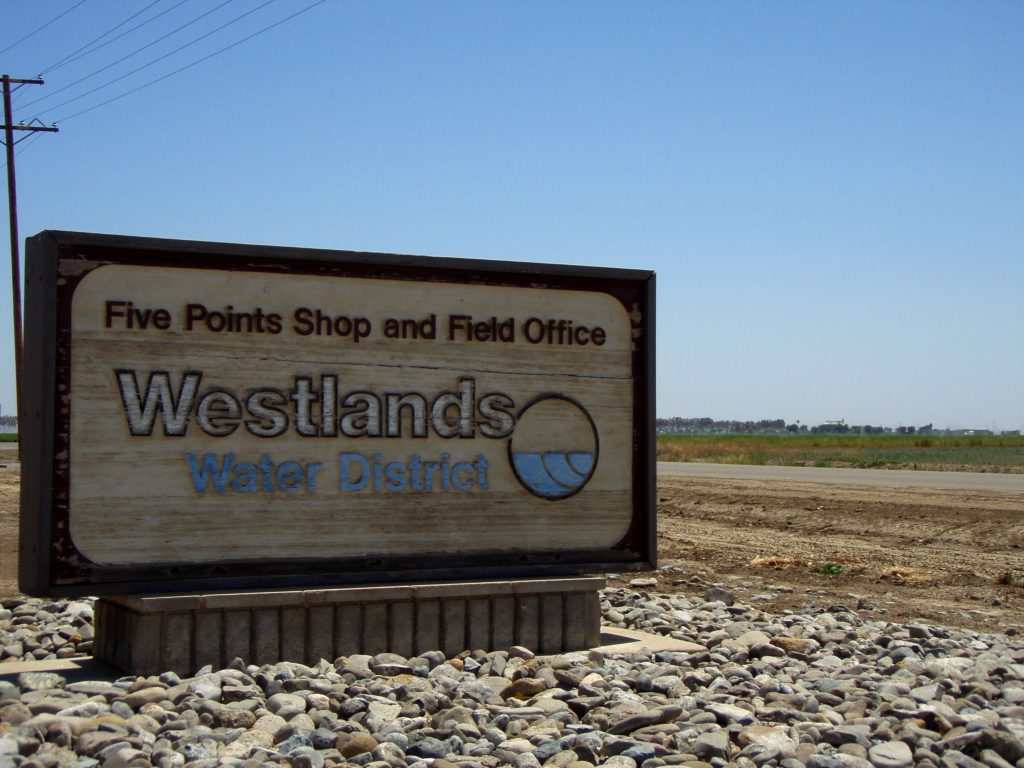
Those who attended last Tuesday’s afternoon session of the Federal Energy Regulation Comission (FERC) at Modesto’s Doubletree Hotel listened to people who use and love the Tuolumne River explain why their needs should be represented in decisions about relicensing Don Pedro Dam’s hydroelectric project, which is powered by the Tuolumne River.
The chief issue for everyone was the state’s proposal to increase flows along all the major rivers of the northern San Joaquin Valley, especially the Tuolumne. The proposal has pitted farmers against fishermen and environmental groups, including a coalition committed to saving the ecology and culture of the San Joaquin Delta.
Much of the controversy has centered around what farmers and local irrigation districts call the flawed science behind the call for increased flows, which the state says are necessary to restore critically endangered salmon runs. But science may soon take a back seat to politics as the Trump administration sued California’s State Water Resources Control Board (SWRCB) over the flow proposals just last Thursday.
The federal government’s position is that the flow proposals interfere with the mission of the Central Valley Project (CVP), a Roosevelt-era program meant to provide assistance to small family farms in the southern San Joaquin Valley. But from its very inception and continuing today, the project’s name has been a misnomer.

The term “Central Valley” refers to the valley that features Bakersfield at its southern terminus and Redding as its northern boundary. It’s the most productive farming region in the world, but it includes the Sacramento Valley— from Stockton north to Redding— and the San Joaquin Valley, from Stockton all the way south to Bakersfield.
Originally promoted as a subsidy for family farms no larger than 160 acres, the CVP soon became a life support system for bigger and bigger operations. Farmers in the southern Valley had exhausted much of their ground and surface water even by the 1930s, and things only got worse as giant corporate farming operations like Boswell and Resnick began gulping water at annual rates as high as the city of Los Angeles.
Locals in the northern San Joaquin Valley have called the state’s proposal for increased flows a “water grab,” but the real grab all along has been by Big Ag in the southern San Joaquin Valley. Diversions from the Sacramento and San Joaquin Rivers have wreaked environmental destruction as the San Joaquin Delta and local rivers dwindle and die from increased demands facilitated by the political powers of politicians like Kevin McCarthy, Devin Nunes and former District 10 Congressman Jeff Denham.
The Trump administration’s lawsuit is just the opening ante in a game that will feature tax dollars bargaining for yet another subsidy for Big Ag in the southern San Joaquin Valley, the last great California stronghold of the Party of Trump. The federal government will try for a deal that keeps sending water south, no matter the consequences.
Anyone who doubts the political forces at play need only consider that Trump’s interim and soon-to-be-permanent Secretary of Interior is David Bernhardt, former lobbyist for Westlands Water District. Located in the southern San Joaquin Valley, Westlands manages to be the nation’s largest water district even while having no historic water rights.
Nonetheless, in an ongoing assault against the environment and public interest, Westlands succeeds year after year in delivering precious northern California water to southern San Joaquin Valley farmers, most especially Big Ag.
Among the people who argued for a viable Tuolumne River last Tuesday were residents of Modesto’s Airport District, many of whom value the river for its recreational and aesthetic appeal. Testifying to the ill effects of low flows and still waters, they offered a powerful argument for increased flows, but the chances they’ll be heard in what has become a high stakes water game are virtually nil—they can’t afford the buy-in.
What the Trump administration’s lawsuit makes clear, as if there were ever a need to doubt, is that our rivers and their water serve the public interest less and less every day. Instead, water has been commodified and subject to the rules of a game in which lawsuits amount to bargaining chips and only a very few players can even put up the ante.


I’d like to offer a few points not mentioned in your latest blast at farmers, Eric.
1. In your efforts to continue to vilify “Big Ag”, you say nothing of the rights of those farmers who make a living from farming along the Stanislaus, Merced, and Tuolumne Rivers and have for generations. These farmers do not “assault” the environment. And if providing jobs to immigrants and those less-educated is “not in the public interest”, then your definition is different than mine. By lumping all farmers together with Stewart Resnick, you vilify all farmers without exception.
2. Speaking of Mr. Resnick, you’ve conveniently managed to leave out the fact the Resnick and his wife, Lynda, have been major contributors to liberal causes and the Democrat Party for decades. A recent review of Stewart’s contributions on OpenSecrets.org shows that, going back as far as 1999, more than 80% of those contributions have gone to the likes of Hillary Clinton, the Democratic National Committee, Kamala Harris, Barack Obama, and many other liberal Democrats and liberal causes.
3. You admit that the Central Valley–to use your words–is “the most productive farming region in the world”. As you and I are both “Valley Citizens”, I ask you–what would the Valley be without agriculture? Agriculture supplies jobs, both directly and indirectly. Without farmers, there would be no need for ag supply companies, food processing plants like canneries, fresh produce packing houses, and other food processing facilities. All of the service industries who support agriculture would be unnecessary. The Central Valley’s unemployment rate is always higher than both the national and state averages as it is. Can you imagine what the local economy would look like without agriculture?
4. I find it laughable that you disparage the recent actions of the Trump Administration for suing the California State Water Resources Control Board as overriding science. What do you think the SWRCB did when it issued its grossly political decision last year in the first place? The agency went through an elaborate show to capture public comments three years ago, and the huge majority of those comments spoke against the increase in flow releases from the reservoirs on the San Joaquin River system. The arguments presented also included substantial scientific evidence that salmon populations have been depleted by non-native species in the Delta who are eating the salmon fry; that the insane releases of more than 1 trillion gallons of fresh water through this same river system since they began in 2009 have NOT increased salmon populations; and urged the SWRCB to consider other efforts to re-build and restore salmon habitat on the rivers. All for naught. Though the weight of the science clearly spoke against the increase in flows, it didn’t matter. The political agenda of the environmentalists–who have a chokehold on public policy in this state and have for decades–prevailed. The amazing proof of that is that we continue to debate this issue even in the face of having experienced recently one of the most severe droughts our state has ever seen.
Finally, you seem to blame Trump and farmers for “commodifying” water. I have news for you: the environmentalists play the exact same game. Not only that, but they play it much better than agriculture does–and they have many more listening ears in this most bluest of blue states. As Mark Twain once wrote, “In California, whiskey’s for drinking and water’s for fighting”. Your one-sided post shows why that is true.
Mr Barton: The central claim for your criticisms is that I have lumped all farmers together. How interesting, then, that another reader makes a special point of noting I did NOT lump all farmers together. That reader has grasped my clear intention. Once you’ve built your straw man, of course it becomes easy to attack my views as anti-farmer. In fact, my point is about subsidies for Big Ag, environmental degradation, and politics in service to the powerful. As far as the science behind decisions to increase flows, I prefer disinterested science to that provided by hired guns. There was abundant science behind the decision to increase flows. Consider, for example, that predators had been preying on salmon for decades upon decades before the steep declines in salmon populations. Consider also that we have established knowledge that dams reduce fish populations and when the dams are removed the fish populations recover. Over the years I have consistently opposed sending water from the Tuolumne, Merced, and Stanislaus rivers south to Big Ag because I would rather protect sustainable farming here, where water is nearby, abundant, and inexpensive than send it south to behemoth corporations. I could go on, but I’ve learned over many years that those who build straw men would rather tilt at windmills than engage in reasoned discourse. As for Mr. Resnick, like all billionaires, he gives to politicians he thinks can serve his interests. Jeff Denham was in his top 10 recipients.
And yet somehow the three politicians you noted as major recipients of Resnick’s largesse were all Republicans, despite the fact that Resnick is one of the first big donors the DNC and Democrat candidates come to for donations and–as I said–makes 80% of his donations to liberals and liberal causes.. Your listing of Republicans only in your post was misleading at best and, at worst, dishonest and disingenuous.
You fail to address my point that the Valley’s economy would be the Appalachia of the West without agriculture. Why? Because you cannot dodge that and so fail even to address it.
You vilify the current Administration for ignoring science when that is exactly what the SWRCB did in their ill-advised decision. I guess it just depends on whose science we choose to pay attention to, doesn’t it? And I didn’t even bring up the fact that the agency and the State are attempting to pierce pre-1913 riparian water rights granted to the water districts and generational farmers by the State more than 100 years ago. It’s a shameful practice, but those in power in California have no shame, and that is a major reason the State is being sued, and rightfully so.
Finally, you claim I set up a straw man to make my argument about family farmers and rest your basis for that claim on the fact that another reader made a special point that you do not lump all farmers together. That is, I think you’ll agree, a pretty flimsy basis for refuting my point. But beyond that, your disdain for agriculture in general is clear from your many articles dealing with the subject of water. For example, you never bemoan the fact that the large majority of the water sent south is not used for agriculture, but to water the lawns of the millions who live south of the Grapevine. But getting into that just wouldn’t fit your narrative, would it?
Mr. Barton: Just for your information, the Valley has been known as “The Appalachia of the West” for decades now, as well as “The Valley of the Poor.” Agriculture’s bountiful success here has not translated into a better quality of life for most residents. And, as I’ve written, the state is going to be stuck with the bills for mass subsidence, air and water pollution, and ruined soils. As for things that fit my “narrative,” I write short, newspaper-length essays, not books, so there is invariably material left out, especially material that fits your “narrative.” If you did your homework, you’d realize I have a long history of fighting sprawl and supporting preservation of quality ag lands. As I’ve said earlier, I could go on, but what’s the point? You are tilting at windmills, especially when you write things like the SWRCB ignored science. They simply prefer their science over the bought science of those who decide on the outcomes they wish before they do their research. So do I.
The SRWCB prefers junk science. They never studied the rivers. The used old outdated science and are pawns for extremist organizations like the NRDC
Excellent response, Eric…. anybody with any history of this valley (which includes me and my family, for a cumulative seven generations) knows that there is a vast difference between the family farmer, dairyman or rancher, even a large family farming group versus Corporate Farming which is what could easily be construed as absentee farming in that many investors in these enterprises have never even seen Central California, use lobbyists to gain their footholds, often get tax breaks on top of whatever deductions due to losses may accrue to their tax benefit, as they employ huge, water consuming pumps to drain our aquifers to the point of collapse (check a recent topological map of Kevin McCarthy and Devin Nunes’s respective Congressional districts if you don’t believe California is already experiencing some serious loss of under water storage space along with a commensurate drop in ground elevation in those areas.)
Add to that that some of the land in question is, indeed, of dubious quality compared to the land further north.; why try to grow cotton that can be had more cheaply from other sources? Why rape our resources, reduce our native salmon (and other fish) populations and otherwise undermine the delicate ecological balance we, as stewards of California’s legacy seek to protect for future generations? Frankly, I think the answer to that questions is summed up in one word: Greed. Corporate greed!
My worry is that, the fish situation notwithstanding, routing more and more water south will allow for incursion of more saline water, particularly during high tides in the Bay not to mention the overall worldwide rise in sea levels, all of which will eventually put our Delta Island farmers in an unsustainable position if a healthy outflow is not maintained. You simply cannot grow crops in brackish water, and those crops are both useful and needed, support communities, provide jobs and often cannot be grown other places in the state, much less the country.
To leave it up to biased studies written in favor of Big Farm-ah (to borrow a similar sounding pejorative phrase which references the corporate drug industry en masse) is akin to taking the tobacco companies’ “studies” by their own people as valid enough to justify their deadly mischief, as routing more water to Corporate Ag entities will, indeed, in time very well kill off not only the fish involved, but the entire concept of “family farming” in this state.
Thank you Babette. It’s especially gratifying to know at least one reader is familiar with the history of cotton here in the Valley, which involves one of the great exploitation cons of all time; you must have read “The King of California.” Bravo!
As did Mr Resnick give big to Diane Feinstein. The state water board and its junk science. Their “l ab” studies. Never did they ever actually study these rivers in recent years. Newsom and Brown both pushed for voluntary settlements which were on the verge of completion but the radical Felicia Marcus did not want to disappoint her radical friends over at the NRDC. Westlands is all so powerful with other federal districts that even in wet years they have received less than 50% allocation. Federal contractors received a full allocation once, two years ago, and many years have past with allocations in the 0% to 25% range. The idiots at the SWRCB in their study claim their proposal won’t hurt local farmers all that much. They can just pump more groundwater. These idiots apparently never heard of the sustainable groundwater act. And the irrigation districts were willing to work with the SWRCB, They had two main points of contention. No drought mitigation and the board’s control of ground water. The SWRCB chose to ignore them. Now this will be tied up in court for ten years.
Well put. Now, how do we get people educated to what is happening?
JO: All we can do is keep trying. Education and history are the necessary keys to a sustainable future. Let’s hope we achieve one.
Thanks Eric, for differentiating Big Ag from small family farms.. The way I see it there are going to be a lot of small farmers on the east side of the northern San Joaquin Valley who wll have to sacrifice their water for Big Ag on the westside.
JO: Exactly.
This is such utter nonsense. Those farmers south of the delta have seen zero or close zero allocations for the last decade thanks to lawsuits from radical bay area environmentalists from the bay area. The state water board was controlled by a chairperson who was the former director of that same radical bay area environmental organization. The horrible state water grab is based on junk s ience. There were agreements in place but the radical state board ignored them. The idiotic state water board plan hurts farmers in our region, most of those with senior water rights. Two thumbs up.for Trump suing them. The state water board could have avoided lawsuits but they chose confrontation
Here’s a breakout of where Delta water goes:
https://mavensnotebook.com/dpg/KeyConcepts/Where_Delta_Water_Comes_and_Goes.html